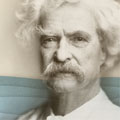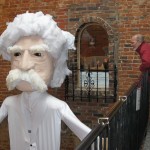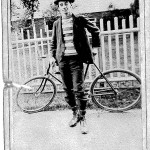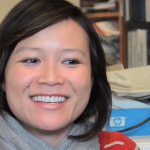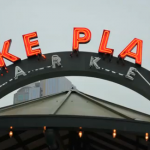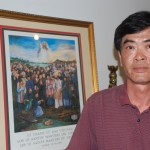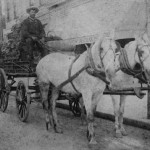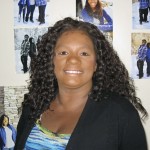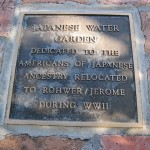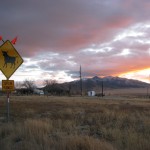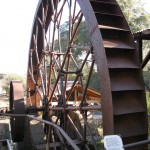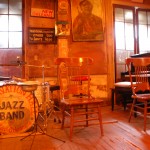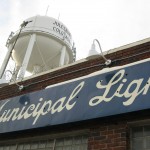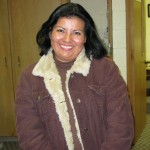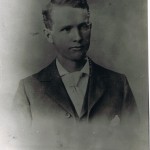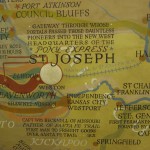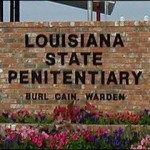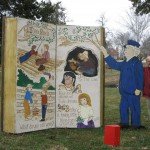
Hodan Isse stands in front of the building that she hopes will soon become a bustling center for the Somali community in Buffalo
Villified today by some as America’s enemies, immigrants and refugees actually may be saviors of the nation’s disintegrating cities.
The Rust Belt cities of Cleveland, Ohio, and Buffalo, Ny., among the poorest in America, have in common empty buildings, shriveling business districts and shrinking populations.
The 2010 census put Cleveland’s population at 396,815, its lowest in 100 years. Buffalo, the nation’s eighth largest city in 1900, has shrunk from 580,000 in 1950 to 261,310 in 2010.
The population numbers translate into human tragedies—underemployed and unemployed workers and homeless people. In Cleveland, Walter P. Ginn, executive director of Family Promise of Greater Cleveland, said the media focus on the visible homeless, individuals on the street and under bridges.
But the stagnant economy has caused, Ginn said, a “fairly drastic increase” among homeless families, who traditionally have tried to stay with their relatives and friends and therefore remain invisible. Now, whenever one of Family Promise’s apartments for homeless families becomes available, the agency receives 30 calls within an hour.
Ginn said the pay level for available work—increasingly fast-food and housekeeping jobs—has gone from $12/hour three years ago to $10/hour. Priscilla Cooper, of Family Connection Center, describes the experience for Cleveland’s black women, 50 percent who are impoverished. They are forced to take housekeeping jobs: “The very poor are doing the same thing they were doing in slavery.”
Karen Brauer, the Salvation Army’s director of social services for Cleveland also bemoans the job crisis: “We’ve lost our industry. It’s very, very scary.” Her comment reminds me of a 2008 book by a friend, Richard Longworth, titled Caught in the Middle: America’s Heartland in the Age of Globalism.
Longworth recalled the days when Cleveland was 50 percent foreign-born—Italians, Germans, Slovaks and Poles. With the shrinking industrial base, that 50 percent dropped to barely 4 percent. “We even have a hard time attracting illegal immigrants,” Ronn Richard, president of The Cleveland Foundation, told Longworth.
In Buffalo, however, the presence of refugees and immigrants, not only Hispanics, creates a different atmosphere. Refugees from war-torn Somalia, for example, continue to arrive daily. Hodan Isse, a professor at the University of Buffalo’s School of Management, takes us on a tour of the west-side Somali community.
Abdinoor Jama and Aden Aden, who fled their native Somalia, started a clothes mending business in a Kenyan refugee camp. Today they operate Jubba Food Store and Tailor on Buffalo’s Forest Ave. “This area is up and coming,” Isse said, “and that’s because of the refugee population.”
Ali Mohamed opened Hatmy Market, 278 Grant St., seven years ago. He has expanded into serving the Nepali community as well as Somalis, employing a Nepali meat cutter. A nursing student at the University of Buffalo, he hopes to continue his business while working three 12-hour shifts each week as a nurse.
Newcomers to America are 30 percent more likely than natural-born citizens to start businesses, according to the Small Business Administration. Edward Roberts, founder and chair of the MIT Entrepreneurial Center, is often quoted as saying, “Immigration itself is an entrepreneurial act.”
Isse, a founder of Help Everyone Achieve Livelihood (HEAL), shows us a large building on West Ferry St. that was purchased for about $20,000. After a $240,000 renovation, it will house HEAL offices and community meeting space on the second floor. The West Side Bazaar—20 vendors from Africa, Asia and Latin America—will sell their wares on the first floor.
Mohamed A. Mohamed, a New York State regional compliance specialist for civil rights who served as Somalia’s prime minister for nine months in 2010-2011, recalls the years he spent helping establish the Buffalo Immigrant and Refugee Empowerment Coalition (BIRAC), which serves about 20,000 Buffalo residents from 20 countries. BIRAC started after-school programs, mobilized people to vote and endorsed candidates.
It also helped immigrants buy their own homes. For $1,000-20,000 five years ago they purchased rundown houses that they then upgraded. Mohamed added, “You won’t see them at $20,000” today. The immgrants’ purchases helped eliminate neighborhood blight and restored houses to Buffalo’s tax rolls that might otherwise have faced demolition.
So Buffalo’s immigrants and refugees have given the city a vitality that Cleveland lacks. Whatever challenges they bring to Buffalo’s schools and social service agencies, there could be a worse problem for the city. The immigrants and refugees could stop coming.
Loren Ghiglione



